There’s no special story or history behind the vine climber Philodendron billietiae. There doesn’t need to be. This Philodendron is special on its own.
This interesting plant needs bright indirect sunlight and well-draining soil. Wait for a few inches of the soil to dry before you water this plant.
Caring for a Philodendron billietiae is simple.
The plant originates from Brazil, Costa Rica, and French Guyana.
The giant glossy arrow-shaped or heart-shaped leaves speak for themselves. Let’s not forget the elegant and long orange-ish-red stems.
So, I will walk you through everything you need to know about caring for this Philodendron.
This article will answer your questions.
Philodendron billietiae Takeaways
| Species | Philodendron billietiae |
| Synonyms | Philodendron bipinnatifidum billietiae, Philodendron sp. billietiae |
| Family | Araceae |
| Genus | Philodendron |
| Growth | Climbing, trailing |
| Height | 5 feet |
| Width | 4 feet |
| Soil | Well-draining soil mix suitable for tropical plants |
| Watering | Every 7-10 days |
| Light | Bright indirect |
| Temperature | 65-85 °F (18-29 °C) |
| Humidity | 60-80% |
| Fertilizer | Fertilize monthly in spring and summer |
| Propagation | Stem cuttings or air layering |
| Toxicity | Toxic to humans and animals such as cats and dogs. Contains calcium oxalate crystals. |
Philodendron billietiae Care
To care for Philodendron billetiae, provide well-draining soil using potting soil, perlite, peat moss, orchid bark, charcoal, and bright indirect light. Water when the top 2” of soil is dry (5cm), providing a temperature between 65-80°F (18-27°C). The air humidity should be above 50%. Fertilize using a slow-release fertilizer every 2-3 months.
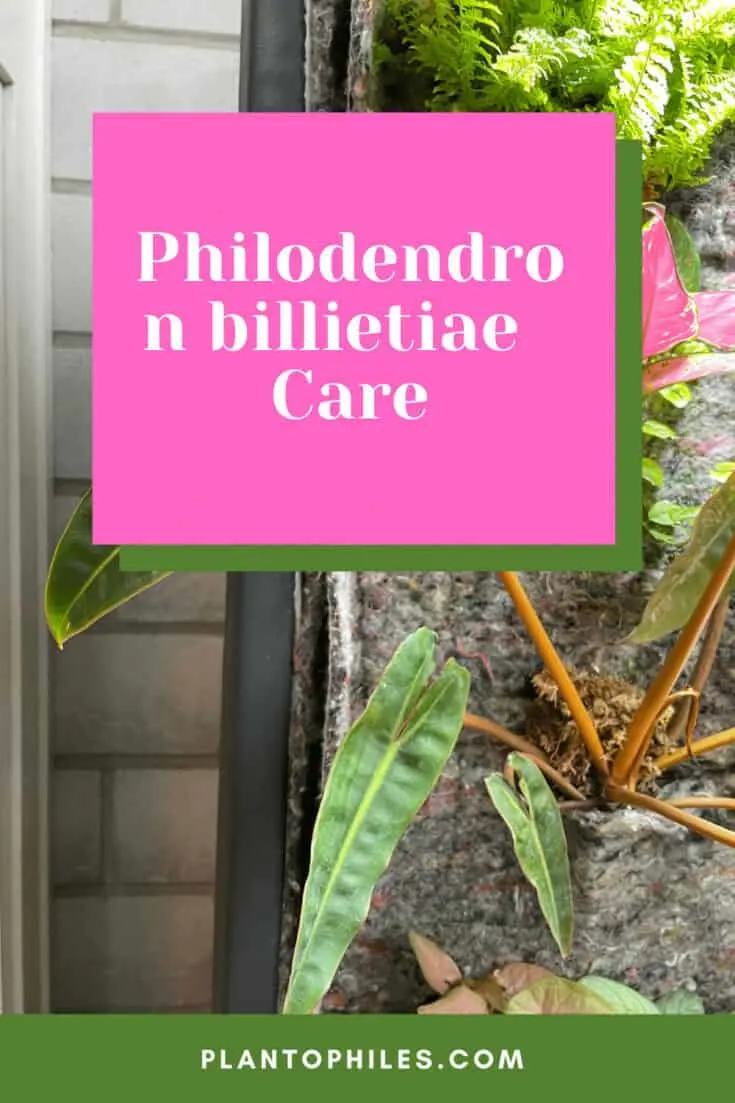
Table of Contents
Philodendron billietiae Care Guide
Soil
The best soil for Philodendron billietiae is chunky aroid soil consisting of potting soil, perlite, peat moss, orchid bark, and charcoal.
Like most Philodendron plants, the Philodendron billietiae needs well-draining soil to thrive. Organic materials work the best for this plant.
Well-draining soil is a confusing name. It sounds as if this type of soil drains water right through it.
Which is true to an extent. It lets any excess water drain on through. But it also holds onto plenty of moisture to hydrate your plant.
Too much moisture stops oxygen from getting through the soil. Oxygen can’t get to your plant’s roots or other important areas.
One issue you’ll come across from too much moisture is the growth of fungi. There are many different fungi.
Some fungi are harmless. But other types of fungi can kill your Philodendron billietiae.
Another major issue from an over-watered plant is root rot. Since oxygen can’t reach the roots, the roots start to rot.
If you’re lucky enough to catch root rot early, you can save your Philodendron. But more often than not, the rot spreads throughout all the roots.
Eventually, the conditions will kill the Philodendron billietiae.
Under-watering your plant is as dangerous as over-watering it. This is why most plants need well-draining soil.
If you aren’t sure how your soil holds up, don’t be afraid to test it before you plant your Philodendron billietiae.
Another great well-draining soil recipe can consist of the following:
- compost
- perlite
- soybean meal
- sphagnum peat moss
The compost, perlite, and sphagnum peat-moss should be equal parts. You only need a handful of the soybean meal for the mix.
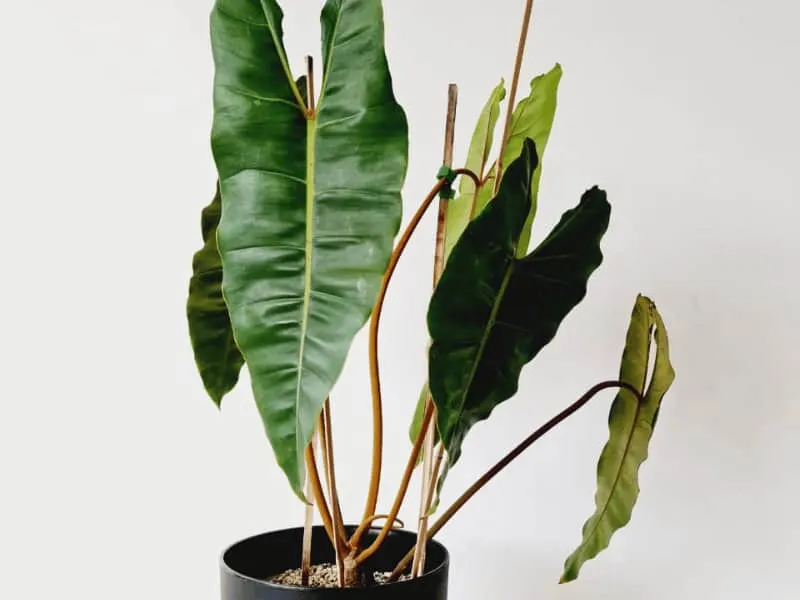
Light
Philodendron billietiae plant prefers bright indirect light.
When one of these plants grows in the tropics, it gets all the necessary sunlight. But it’s also shaded by trees and any taller plants nearby.
If you expose your Philodendron’s leaves to direct sunlight for long, they will burn. The leaves will develop nasty-looking scorch marks.
But your plant still needs bright sunlight to grow those large leaves it’s famous for.
It doesn’t have to be hard to achieve both bright sunlight and indirect sunlight. All you need to do is place the Philodendron in east or north-facing window.
Under artificial lights, place your Philodendron billietiae to the side a few inches. This makes sure the light isn’t hitting the plant directly.
Be careful not to set the plant too far away from the lights. The further away the plant is, the less light it receives.
You have to rotate the plant every few days using artificial lights.
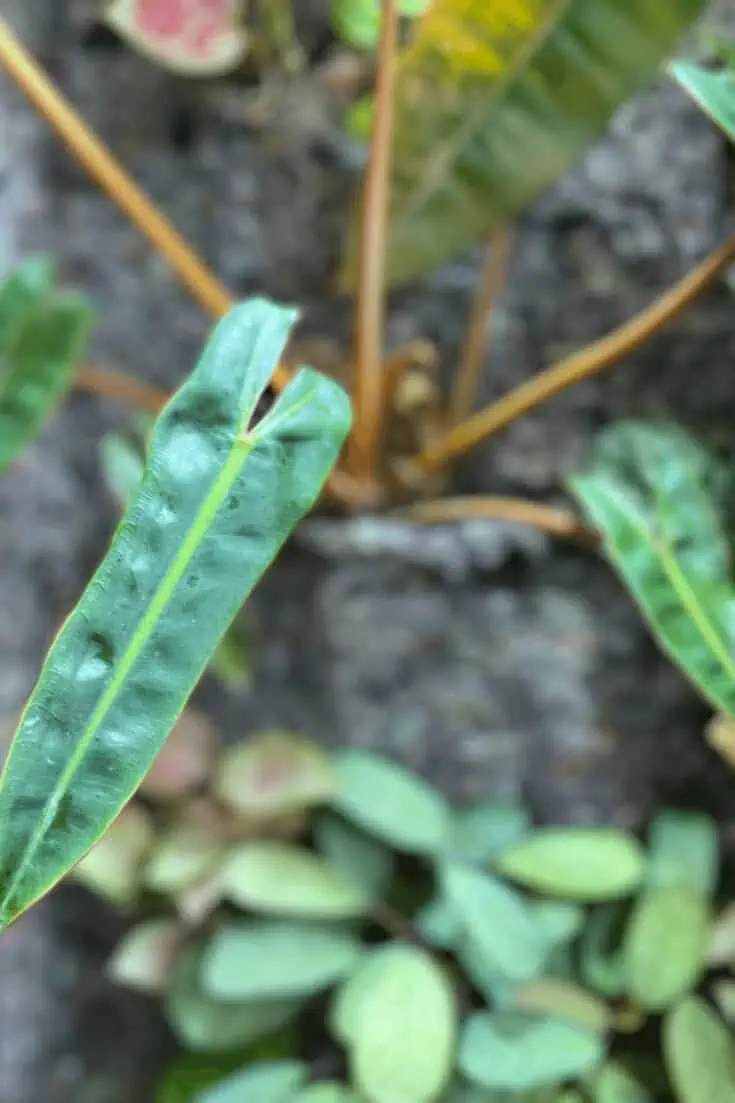
Watering
Your Philodendron billietiae plant needs moist (not saturated) soil to thrive.
A Philodendron with saturated soil can come across several problems. Some of these problems will kill your plant.
Of course, root rot (or wet feet) is one of those big problems that can come with over-watering.
If you catch root rot early enough, you can save your plant.
The problem is, root rot doesn’t always have obvious signs above the soil. And the signs that your plant might exhibit can be mistaken for other plant conditions.
Before you water your Philodendron billietiae, check the soil to see how moist or dry it is.
To check your plant’s soil, you must stick your finger in the soil. Stick your finger up to your knuckle or about two inches deep.
If the soil is dry to the tip of your finger, it’s time to water your plant.
Never water it if these few inches of soil are still moist. This will lead to over-watering, and we know what that leads to.
Temperature
The Philodendron billietiae does best in temperatures ranging from 65F (18C) to 80F (27C).
At night, the temperature should range between 55F (13C) and 65F (18C).
Keep this Philodendron away from freezing temperatures. It can’t take any cold below 55F (13C) or frost.
Humidity
The tropical Philodendron billietiae needs high humidity above 50%. It originates from a warm climate that carries moisture in the air.
So your plant can get that high humidity; you have to create that environment yourself. Don’t stress. It’s easy to create high humidity in your home.
The best method for creating humidity is the pebble tray method. It’s easy to set up, and it’s easy to track.
The first thing you need to do is fill a tray full of pebbles. Then you fill the tray with water. It needs to hold a lot of water, but it shouldn’t cover the pebbles.
Now, all you have to do is place your plant pot on the top of the pebble tray.
The water in the pebble tray is going to evaporate at a slow pace. When the water evaporates, it creates moisture in the air.
Your Philodendron billietiae plant gets to absorb all that new moisture.
The pebble tray method isn’t your only choice. You can also fill a spray bottle with water. Then spray down your leaves.
You have to be careful not to saturate or soak the leaves. This can cause a fungus problem. The leaves will become covered in strange lesions.
It’s also hard to track the amount of humidity you’re creating when you use this method.
And you have to set a routine for when you need to spritz your plant. Otherwise, it’s going to be hard to keep track of when your plant needs moisture.
Your other option is to use a humidifier. This allows you to control how much humidity is being created.
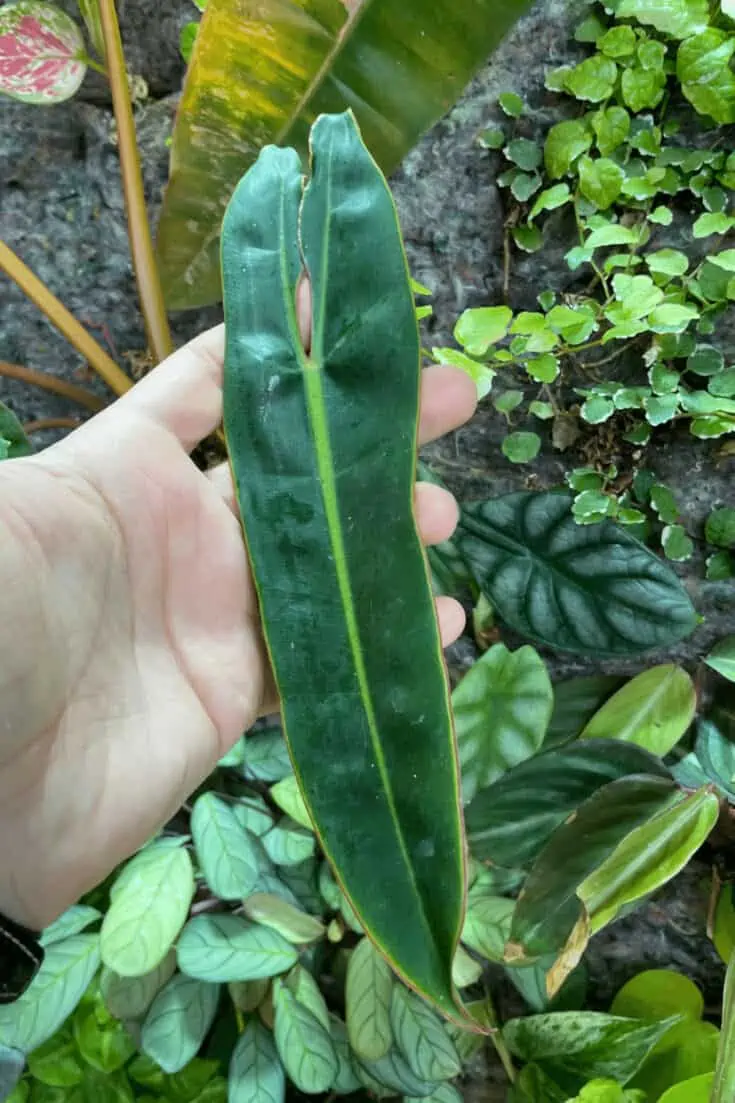
Fertilizer
A slow-release fertilizer is the best choice for fertilizing a Philodendron billietiae plant.
A slow-release fertilizer releases fertilizer for months at a time.
Using this fertilizer makes it so you don’t need to constantly fertilize your plant. You’ll only need to fertilize every two to three months.
Make sure the fertilizer you use has all the major macro-nutrients. This includes nitrogen, phosphorous, and potassium.
The soil for your Philodendron billietiae needs to be moist before you fertilize it. If the soil is dry, the fertilizer will burn the plant’s roots.
Propagation
Propagating a Philodendron billietiae plant is like propagating most other Philodendron plants.
You can either propagate with stem cuttings or through the air layering process.
Keep reading for more information on how to propagate this plant.
Growth
A Philodendron billietiae can grow up to three feet in height. The plant grows to be about eight inches in width.
The leaves grow between three feet and five feet in length. For width, they grow between seven inches and 10 inches.
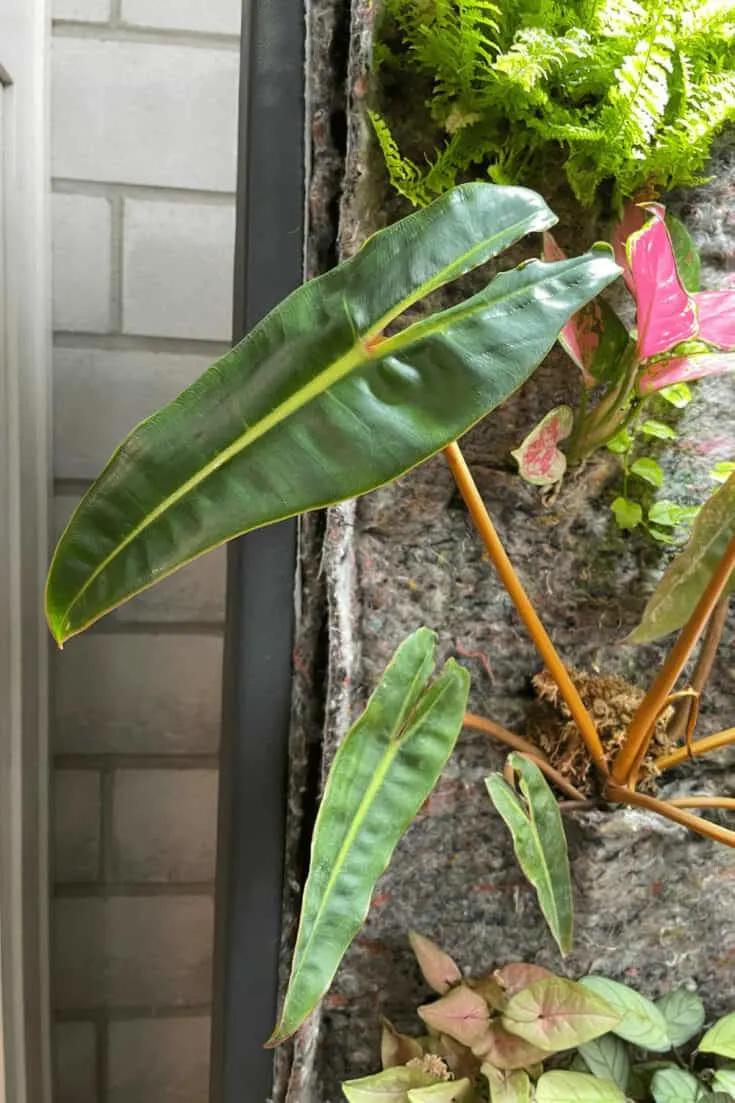
Potting
Regarding the Philodendron billietiae, you need to re-pot every two years or so.
On average, it takes two years for this Philodendron’s roots to outgrow the current plant pot used.
If the roots become compacted due to a small pot, they become stressed. Stressed roots are more susceptible to several plant diseases and conditions.
Make sure you only re-pot your Philodendron into a pot that’s only a little bigger than the original.
Philodendron billietiae Propagation Steps
It doesn’t matter how long you’ve been caring for houseplants. Propagating a Philodendron billietiae plant is easy using the stem-cutting method.
We have two different methods to propagate this Philodendron. We’re going to walk you through both ways.
Using Stem Cuttings
- You have to start by getting your Philodendron billietiae stem cut. There are a few things to consider before you get this cutting. You want the best stem cutting to have a better chance of rooting. The perfect cutting is two to four inches in length. You should cut right after a leaf node, and it should have at least two leaves attached. You’re going to need a pair of sterilized pruning shears. You can use isopropyl alcohol to sterilize the shears. Once the pruning shears are ready, you can get your stem cutting.
- Now it’s time to cure stem cutting. Curing a stem cutting allows the end you cut to callous over. The calloused end will be the end in the soil when you plant it. Let it sit out for at least seven days to cure the cutting in a warm environment.
- You have extra time to get everything ready. Get the plant pot and soil ready for planting. The plant pot should have drainage holes. These holes allow excess water to drain right on through. Since this Philodendron climbs, you might want to prepare a mossy pole. You only have to plant it in the soil. But you don’t have to plant the mossy pole yet. It takes a while for a Philodendron billietiae plant to grow.
- Once the week is up, you can plant your stem cutting. Start by sticking your finger a few inches deep into the soil. This makes a hole that fits the stem cutting. Stick the cutting into the soil and pack soil around it.
- There will be times when a stem cutting won’t hold itself up. If you encounter this issue, tie the stem cutting to a straw. This is a tried and true method.
- All that’s left is for your Philodendron plant to grow. You’ll have to start wrapping it around the mossy pole when it starts to vine out. Water the stem cutting when the soil dries and ensure it gets bright indirect sunlight.
Using Air Layering
- You have to wound your Philodendron billietiae plant for the air layering process. It sounds much worse than it is. To wound your plant, you need a sterilized knife. You can use isopropyl alcohol to sterilize this knife. Once the knife is ready to go, go ahead and wound the plant. The cut should be about two inches in length and two inches deep.
- The wound needs to stay open for it to root. To keep it open, stick a toothpick through the top and bottom of the wound. Make sure it’s positioned so it keeps that wound open.
- It’s time to get some sphagnum peat moss ready. The peat moss needs to be moist so it can stick. Spread the peat moss on the plant’s wound. Make sure you cover it. You can choose to use a rooting hormone compound. These hormones can speed up the growth of the roots.
- This next step isn’t required. If the sphagnum peat-moss is sticking to the wound still, you can go ahead to step five. But if the peat moss doesn’t stick to the wound, try tying a string around the stem and wound. This will help keep most of the peat moss against the plant.
- Now you’re going to take plastic wrap and wrap it around the wound and stem. Ensure the plastic wrap is tight enough to hold the peat moss to the wound. But the plastic wrap must be loose enough for the peat moss to breathe. You can use duct tape to hold the plastic wrap to the stem.
- It’s time to get the plant pot ready. The wound and peat moss will take a while to grow roots. You might as well prepare for when the roots are ready to plant. Your plant pot should have drainage holes to let water drain through. Make sure you’re using well-draining soil. You can get the mossy pole ready by planting it in the soil. But this isn’t a requirement since it takes a while for a Philodendron billietiae plant to grow.
- It takes around a month for roots to start to grow. The wound takes several months to grow long enough roots to plant. Once the roots are about three inches long, they’re ready to plant. Before you can plant it, you have to cut the wound from the stem. You need a sterilized knife for this task. You’ll cut a few inches above the peat moss and a few inches below the peat moss.
- Remove the plastic wrap that covers the peat moss and wound. Be very careful while doing this so you don’t injure the roots. They’re fragile.
- Now you get to plant the roots. The roots need to be completely underneath the soil. As you do the planting, be careful with the roots.
- It will take a while for your Philodendron billietiae to grow, but it’s worth it. For the Philodendron to grow, you need to care for it like a mature plant. Water it as needed and make sure it gets bright indirect sunlight.
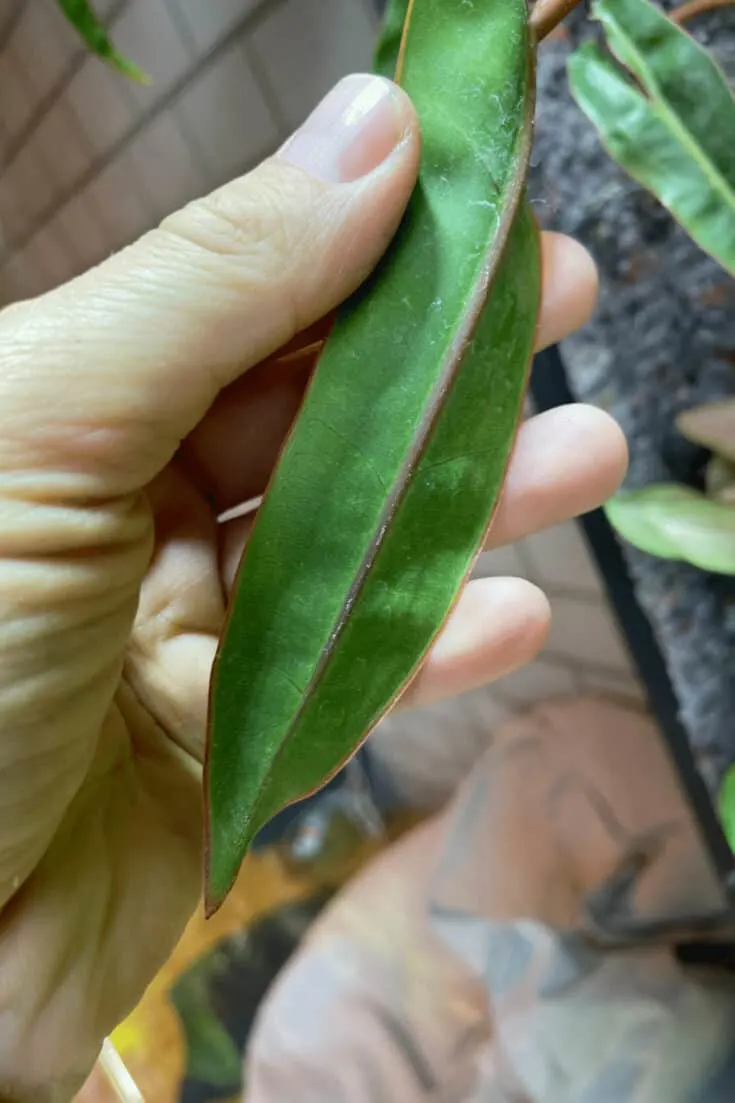
Common Problems with the Philodendron billietiae
Another great aspect of the Philodendron billietiae is that it isn’t a pest magnet. You don’t need to check your plant daily for insects taking over.
It takes a lot off your shoulders regarding Philodendron’s care.
That doesn’t mean having a pest infestation in your Philodendron is impossible.
If you bring an infested plant into your home, there’s a chance that a few plant pests will wander. They’re going to find their way to your Philodendron billietiae plant.
There are really only two plant pests that like this tropical plant. The first plant pest is the aphid.
Aphids have pear-shaped soft bodies with long antennas. They’re so small it’s hard to see them with the naked eye.
These plant pests feed on the sap inside of your Philodendron billietiae. They can pierce through the outside of the plant to get to the good stuff.
The sap contains and carries two main types of cells.
One cell type carries the water your plant absorbs through the soil. The other type of cell carries the nutrients, also absorbed from the soil.
Your plant relies on water and nutrients to thrive. They’re needed to go through the photosynthesis process.
A small aphid infestation won’t do too much damage to your Philodendron billietiae.
But a large aphid infestation is another story. That’s more mouths sucking out the sap from your plant.
If these bugs are taking everything your plant needs, there will be problems. The worst-case scenario is the death of the plant.
The second plant pest you might come across is mealybugs. Mealybugs are unique insects.
Most first notice a mealybug infestation by the appearance of cotton fluff on the plant.
Mealybugs are covered in a cotton-like substance. This is why you’ll see that cotton fluff everywhere.
This cotton-like substance is armor to protect the bug from outside harm.
Like aphids, mealybugs feed on a plant’s sap.
They can pierce through the outside of the plant with their straw-like mouths. This mouth also allows them to suck out the sap.
So, the mealybugs steal everything a plant needs to survive and thrive.
These plant pests don’t have to be difficult to get rid of. A great solution is to use neem oil.
Neem oil is all-natural. It’s not known to harm plants, but you’ll still want to test it before usage.
If you’re worried about the strength of the neem oil, don’t be afraid to dilute it with water.
To use neem oil, you fill a spray bottle full of the oil. Then you spray down your Philodendron billietiae plant.
The oil is so heavy that it suffocates these pests. Then all you need to do is wipe your plant down to eliminate the dead bugs.
You might have to repeat this process twice a week for a few weeks. It depends on how bad your plant’s infestation is.
Tips for an Unhappy Philodendron billietiae
You want to keep your Philodendron billietiae plant happy. You want a lush plant that’s thriving.
Unfortunately, you can’t always keep any Philodendron happy. Life happens, and so do mistakes.
Here are some tips for an unhappy Philodendron billietiae plant.
Your Philodendron billietiae Has Droopy White Leaves
A Philodendron billietiae plant with droopy white leaves is going through cold shock.
As we stated earlier, this Philodendron can’t take freezing temperatures. When it’s exposed to these types of temperatures, there are going to be consequences.
If your Philodendron is going through cold shock, you might have it too close to an air conditioner. Or you left a window open on a cold day.
The first step is to make sure your Philodendron is in a warmer area. Move it away from your air conditioner or any open windows.
Now all you can do is prune any dead leaves from the cold damage. This will let new and healthy leaves grow back in their place.
Your Philodendron billietiae’s Leaves Have a V-Shaped Stain
Philodendron billietiaes with v-shaped stains on the leaf tips have a magnesium deficiency.
According to the Florida Department of Agriculture and Consumer Services, the stains are only the beginning. These weird stains will turn into brown necrosis.
To fix the magnesium deficiency, spray your Philodendron with Epsom salts and water. Epsom salts are full of magnesium.
But this is only a temporary fix. You need to invest in fertilizer with a concentration of magnesium.
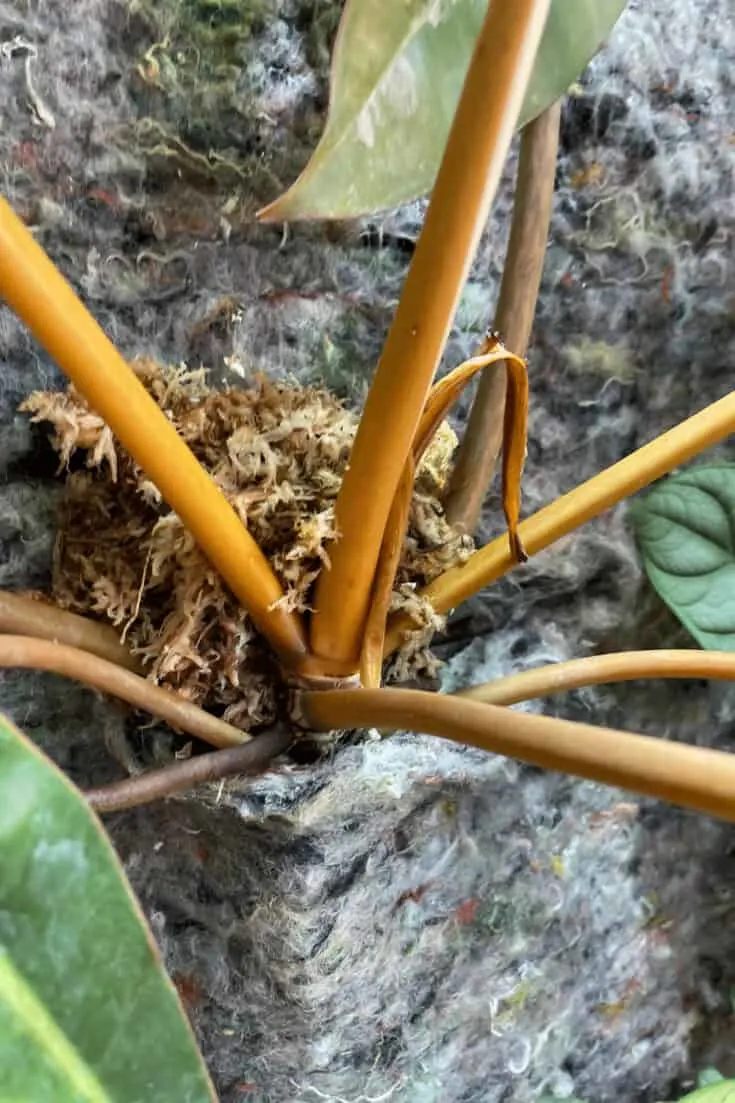
Other Varieties of Philodendrons
There are 400 species of Philodendrons to choose from. You can build your tropical paradise in your home.
Below are some fun Philodendrons to pair with your Philodendron billietiae.
The Philodendron micans have velvety leaves. These velvety leaves are dark green but hide a deep purple too.
Philodendron grazielae
This super adorable plant grows teeny tiny heart-shaped leaves. It’s smaller than many Philodendron plants.
This Philodendron plant produces beautiful leaves. It’s as if someone took a paintbrush and painted white swirls over them. The white is the perfect contrast against the green.
We love this Philodendron species. It’s a shrub-type Philodendron with gorgeous leaves. The leaves are orange on top and green underneath.
Philodendron hederaceum
The Philodendron hederaceum plant is another Philodendron that creates heart-shaped leaves. But it grows to be much bigger than the Philodendron grazielae.
Frequently Asked Questions About Philodendron billietiae
Do I have to use a mossy pole for my Philodendron billietiae plant?
No, you don’t have to use a mossy pole for your Philodendron billietiae. Bamboo stakes are a great alternative. You can also use a hanging basket instead of a plant pot.
Are Philodendron billietiae plants toxic?
Yes, your Philodendron billietiae is toxic. All Philodendron plants are toxic. This is because the plant is covered in calcium oxalate crystals. Keep your pets away from it.
Why are the leaves on my Philodendron billietiae curling at the tip?
If the leaf tips on your Philodendron billietiae are curling, you’re over-fertilizing. Change the soil out for the plant and start fertilizing less.
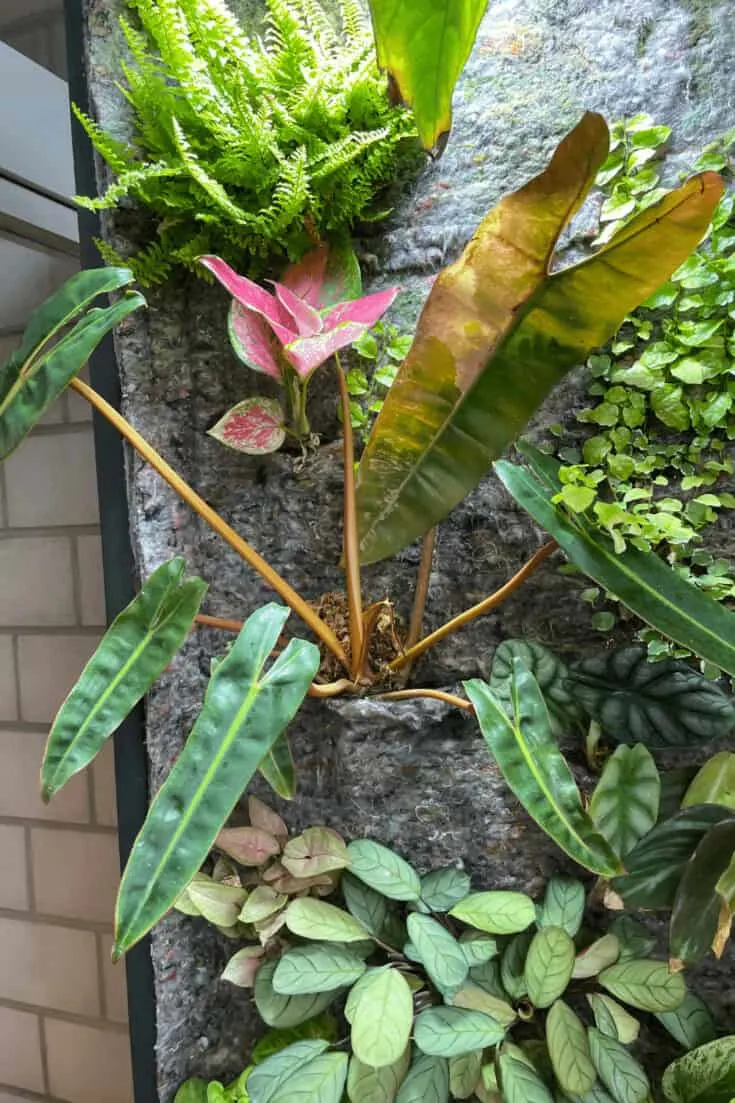
Reverted Philodendron billietiae variegata. Only the oldest leaf shows variegation
Conclusion
The Philodendron billietiae plant can grow to a decent height. And the leaves can grow to a decent length. You better make sure you have the space to care for one of these tropical beauties.


